How Do You Optimize for AI Search Results?
Jan 20, 2025
Written by Casey Bjorkdahl

Casey Bjorkdahl is one of the pioneering thought leaders in the SEO community. In 2010, Casey co-founded Vazoola after working for a Digital Marketing Agency for five years in New York City. Vazoola is now one of the fastest growing and most widely recognized SEO marketing firms in the country.

Look around you. AI is popping up everywhere, and it’s here to stay. That’s no secret, right?
Artificial intelligence is even rapidly transforming the way search engines process and deliver information.
Never one to fall behind in the technological race to the top, Google launched AI Overviews in May 2024. This new search feature improves users’ experience by offering brief yet comprehensive summaries at the top of search results pages.
How do AI Overviews impact SEO?
Marketers, business owners, and content creators have to adapt to the new feature. When they optimize for AI-driven search results, they improve their visibility, and they make sure their content remains competitive in the ever-evolving digital world.
But how do you optimize for Google AI Overviews? It’s not as hard as you might think.
Key Takeaways
-
AI Overviews provide concise answers directly within search results. They streamline the user experience.
-
The rise of AI Overviews can potentially decrease traffic to individual sites by meeting user needs without a click-through.
-
Optimizing for AI Overviews requires focusing on high-quality content, relevance, and user intent.
-
You can incorporate structured data and align content with your audience’s needs to increase the likelihood of being featured in AI Overviews.
Table of Contents
What Are AI Overviews at Google?
If you plan to optimize for AI search results, you first have to understand Google AI Overviews. The innovation illustrates Google’s focus on better search efficiency and higher user satisfaction.
They’re an extension of traditional search results. Google designed them to offer users a summarized response to their queries. They get all the information they need without visiting multiple websites.
These detailed snippets are made by pulling data from a variety of authoritative sources across the web. The information is then synthesized into a clear and concise summary.
For example, someone searching on Google might ask, “how to plant a vegetable garden.” In the past, they would be provided a list of websites that answer that query to one extent or another.

With AI Overviews, the searcher is instead provided with a summary of steps like choosing a location, preparing the soil, and selecting the seeds. All of this information is sourced from relevant articles, but the user doesn’t have to visit those pages to obtain it. That way, people can quickly access actionable insights, thereby saving them ample time searching.
AI Overviews can be a double-edged sword, however. Sure, it enhances user satisfaction. But at the same time, it reduces traffic from the originating sites. If users already have the information they need, there’s often no reason for them to click outside of Google.
Because of that, it’s so important for website owners and marketers to create content that meets AI’s criteria for selection, as well as engages readers in a way that encourages further exploration to their site.
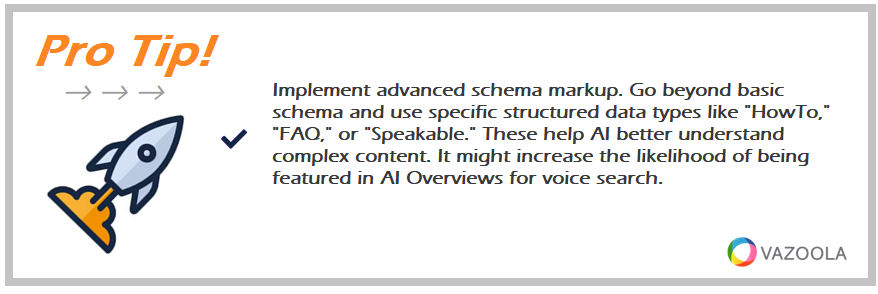
Implement advanced schema markup. Go beyond basic schema and use specific structured data types like "HowTo," "FAQ," or "Speakable." These help AI better understand complex content. It might increase the likelihood of being featured in AI Overviews for voice search.
What We Know So Far About AI Overviews
As with so much related to Google’s algorithms, there’s so much we don’t know about AI Overviews aside from what the search giant has published. Currently categorized as “experimental,” Google is still refining and expanding upon the feature.
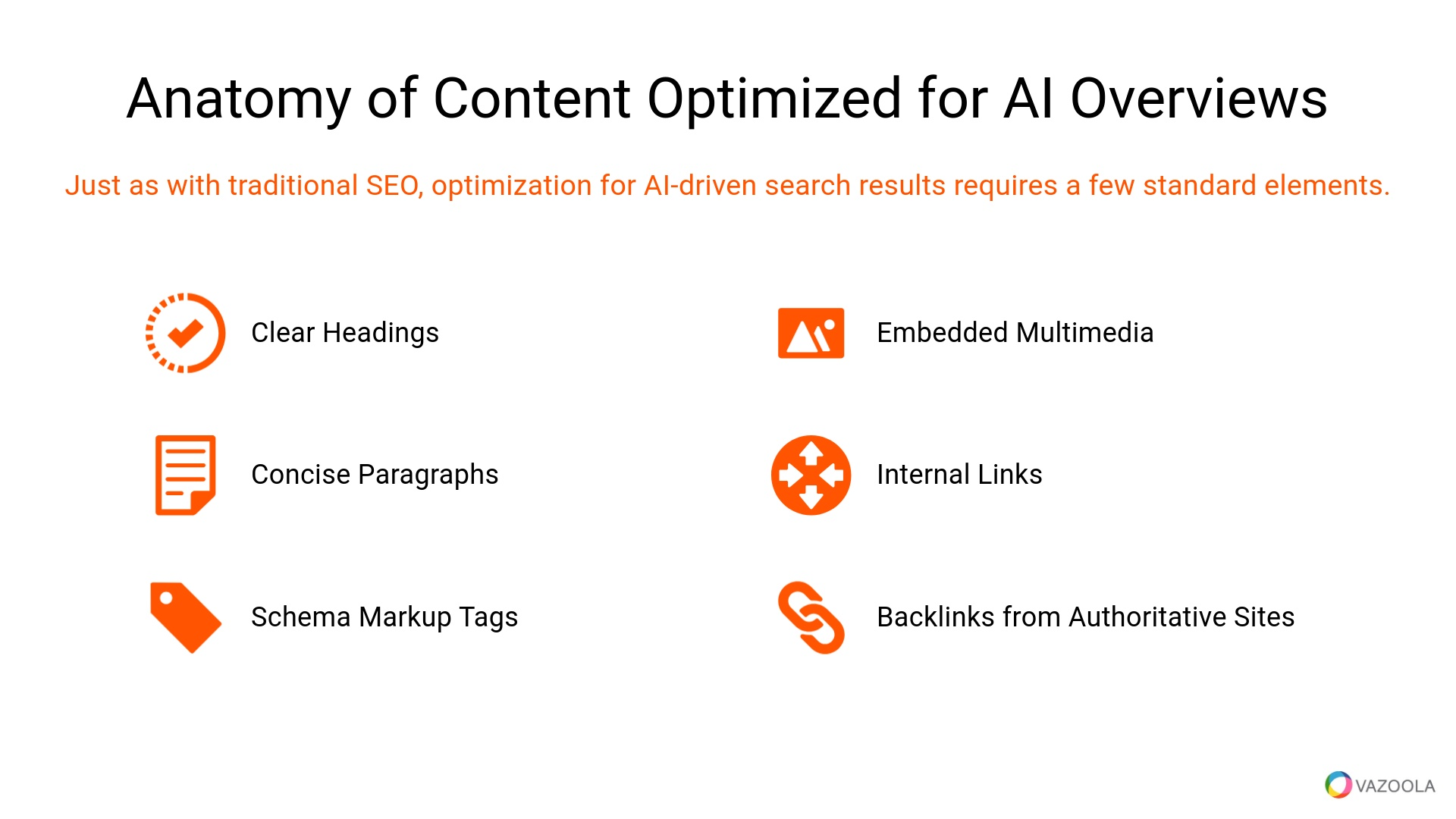
The feature was originally rolled out in May 2023 under the label Search Generative Experience. It was later rebranded as AI Overviews, a sign that Google intended to fully integrate AI into search.
Still, the term “experimental” tells marketers and website owners a couple of things.
First of all, the features and functionality continue to change as Google evaluates feedback and adjusts its AI’s behavior. That means what works today might not be what works tomorrow.
Further, the algorithm’s ability to parse and summarize the data it finds will probably become more sophisticated as time goes by. If you want to make sure your content strategy evolves alongside this development, you need to stay updated on these changes.
The whole point of Google’s AI Overviews is to further boost its search capabilities – especially for queries that require nuanced answers. For example, the question, “What are the best practices for digital marketing,” might lead to an AI Overview that summarizes recent trends, effective tactics, and useful tools. It would complete the response with links to related resources.
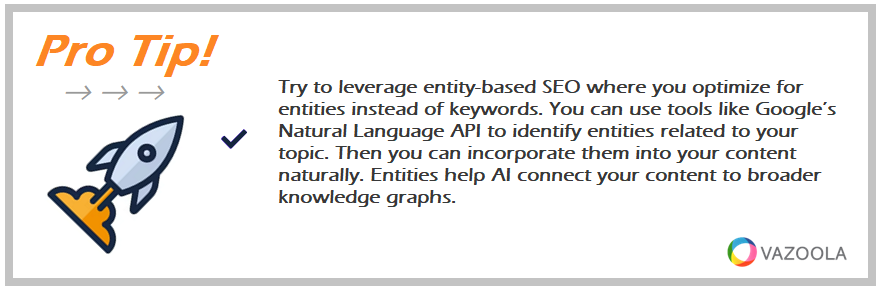
Try to leverage entity-based SEO where you optimize for entities instead of keywords. You can use tools like Google’s Natural Language API to identify entities related to your topic. Then you can incorporate them into your content naturally. Entities help AI connect your content to broader knowledge graphs.
How Does Google AI Work
Are you wondering exactly how AI Overviews work? Their responses rely on advanced natural language processing and machine learning algorithms.
With these technologies, Google can better analyze the actual intent behind a search query. It identifies relevant sources and transforms the information into a concise and easy-to-understand format.
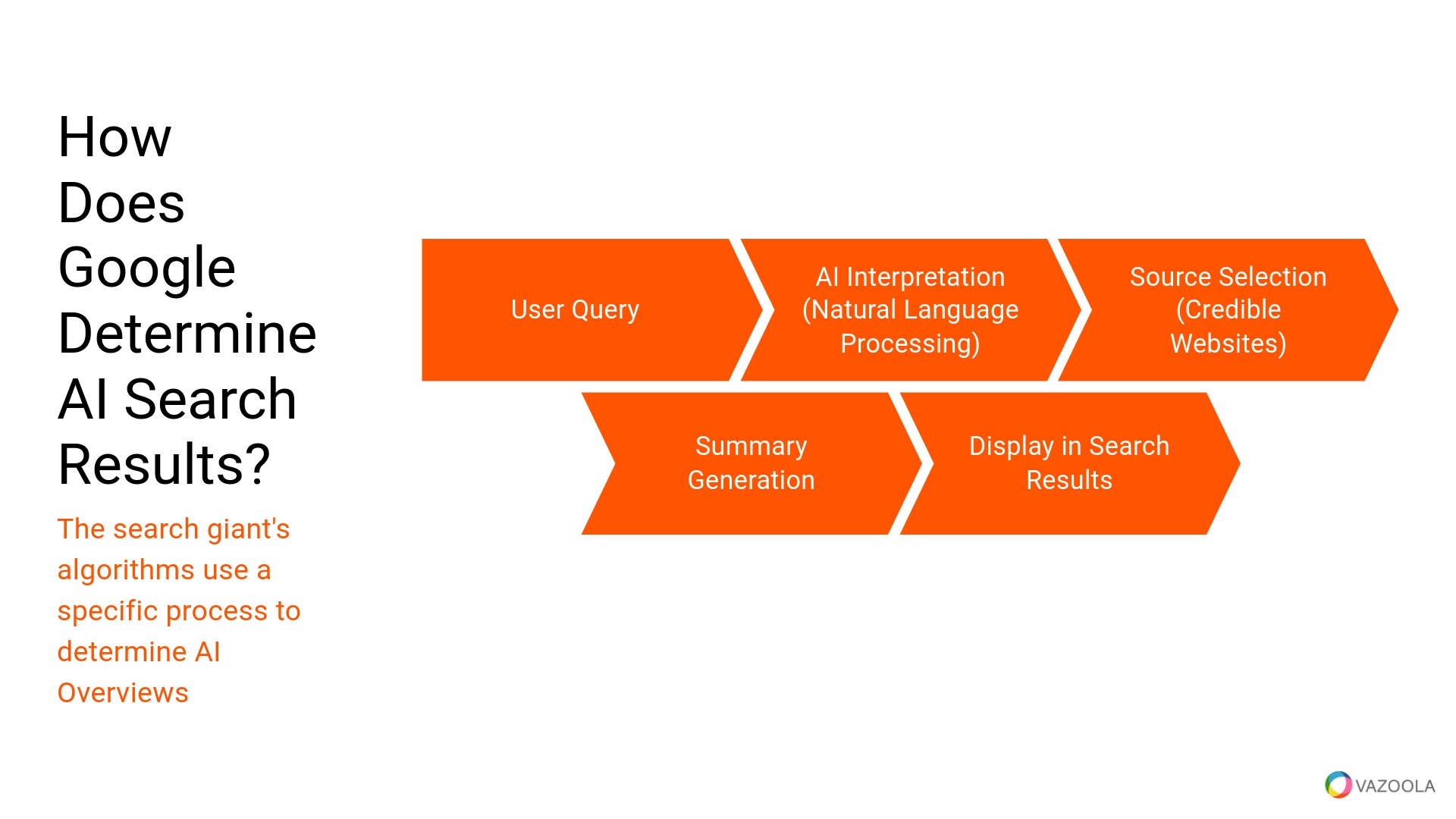
We do know the AI Overviews process involves a few key steps:
-
AI understands queries’ context. It interprets not only the words in a query, but also its underlying intent. A search for “best time to water plants,” for example, might trigger an overview with factors like climate and plant type.
-
Google’s algorithms also identify trustworthy and high-quality sources from across the web. Included web pages are often from sites with strong domain authority, clear expertise, and up-to-date information.
-
AI then condenses the selected information into a coherent narrative that directly answers the users’ question. No more navigating through multiple sites to find the right answer.
Let’s say someone searches for, “How does solar energy work?” The AI Overviews result might explain basic principles of photovoltaic cells, energy conversion, and storage options. The result will also cite multiple credible sources.
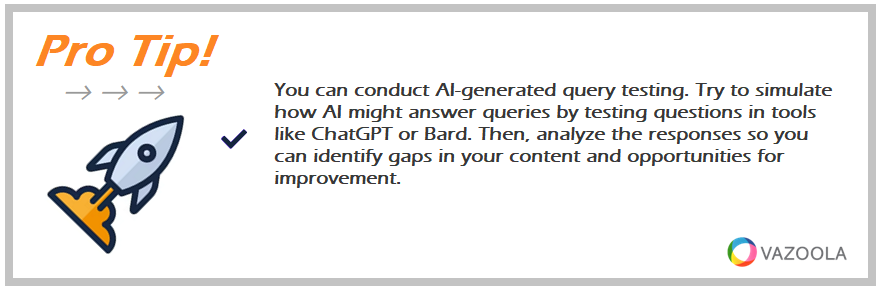
You can conduct AI-generated query testing. Try to simulate how AI might answer queries by testing questions in tools like ChatGPT or Bard. Then, analyze the responses so you can identify gaps in your content and opportunities for improvement.
How to Optimize for AI Overviews
Much as you’ve always optimized your content for search, you can optimize for AI Overviews by following a few simple steps.
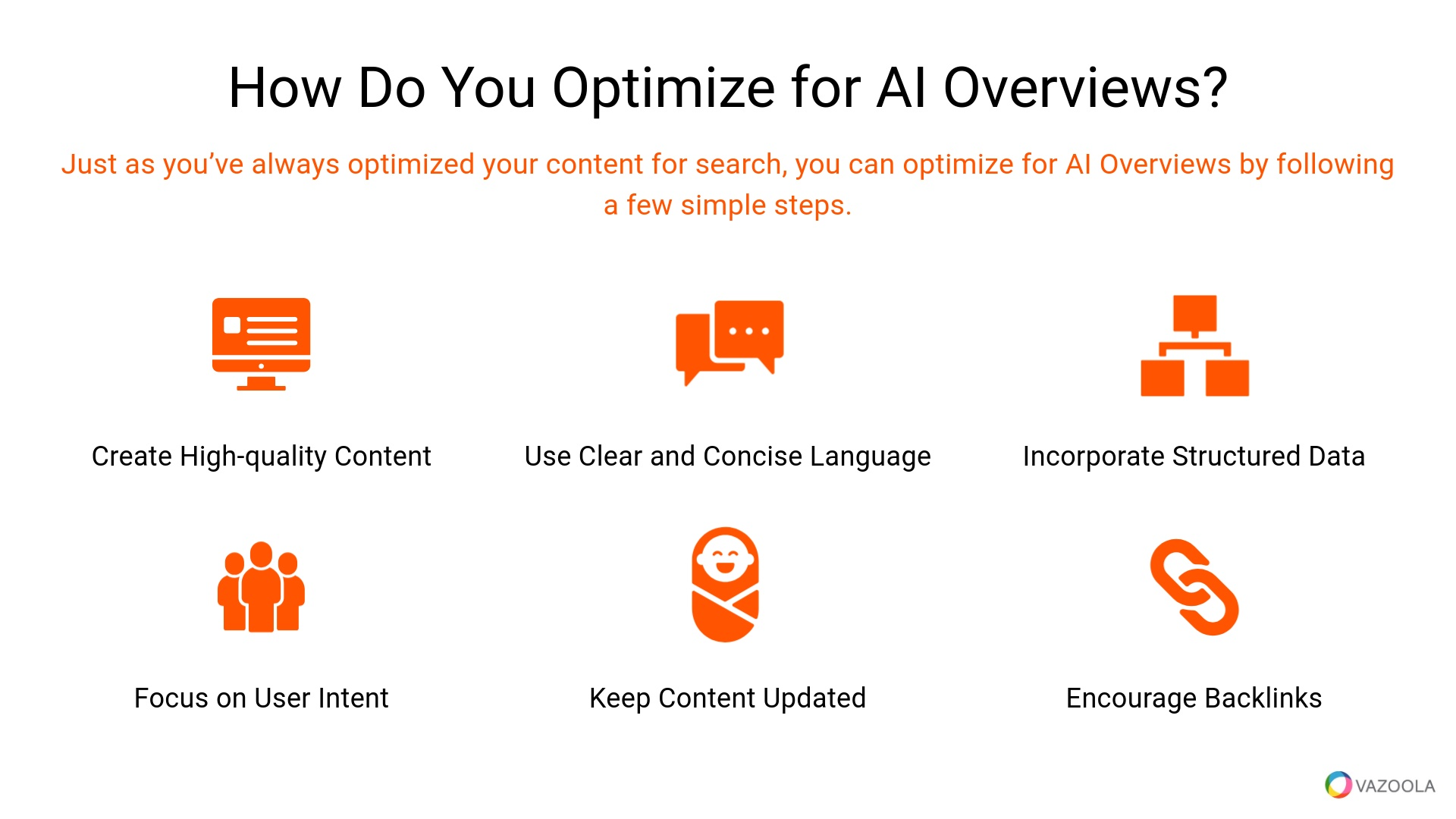
1. Create High-Quality Content
When it comes to AI Overviews – as well as most SEO efforts – content quality is paramount. Google’s AI algorithms prioritize sites with authoritative, clear, and comprehensive information.
You can satisfy these requirements by conducting thorough research, then presenting your findings in an accessible format. Infuse your content with visuals, infographics, and vivid examples. You’ll boost your content’s appeal and usefulness.
Let’s say you’re writing about “healthy meal prep.” You can include step-by-step instructions, common mistakes to avoid, and actionable tips for readers to follow. This diverse range of information will increase your chances of being featured in AI Overviews.
2. Use Clear and Concise Language
When your content is easy to process, AI algorithms are more likely to select it for snippets. You therefore want to avoid overly complex sentences, as well as jargon – unless your audience specifically requires it. Try to break down more sophisticated topics into bite-sized sections, adding bullet points and numbered lists when appropriate.
As an example, an article on “how to boost website traffic,” might perform better if it clearly outlines the process with steps like optimize keywords, enhance user experience, and leverage social media.
3. Incorporate Structured Data
Also known as schema markup, structured data helps search engines understand the content on a web page. When you add structured data for FAQs, how-tos, and reviews, you can increase the chances of your content being featured in AI Overviews.
For instance, if your site offers product reviews, adding review schema can make it easier for Google to identify and summarize your key points in an AI Overview.
4. Focus on User Intent
It’s so important to understand your audience’s needs so you can create the type of content they are searching for. Just like with your traditional SEO, conduct keyword research to identify common queries in your niche. Then you can address them comprehensively. At the same time, try to anticipate follow-up questions. You can provide the desired answers within the same piece of content.
If a post were titled, “What is AI link building,” for example, it might include sections on benefits, common strategies, and modern SEO trends.
Review Google’s Helpful Content guidelines to create content that Google loves.
5. Keep Content Updated
The world is rapidly changing. Therefore, it’s crucial your content stays relevant. Regularly review and refresh your content so it always aligns with current trends and best practices. Google’s AI algorithms tend to favor fresh, accurate information.
An outdated blog post is thus less likely to be featured at the top of the SERPs. Let’s say you manage a blog about digital marketing, you’ll want to update older posts with new data, recent tools, or revised strategies. That way, your page remains competitive.
6. Encourage Backlinks and Authority Signals
Even in the age of AI, backlinks are still a core component of SEO. They give content more credibility. The more authoritative your site appears to Google, the higher the chance that your content will be selected for AI Overviews. You can boost your content’s visibility by building relationships with other reputable websites relevant to your niche.
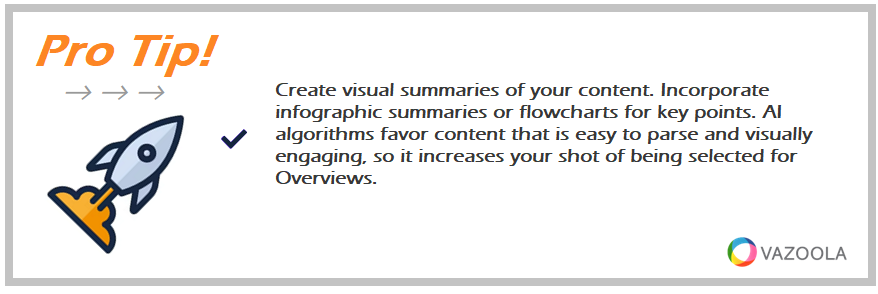
Create visual summaries of your content. Incorporate infographic summaries or flowcharts for key points. AI algorithms favor content that is easy to parse and visually engaging, so it increases your shot of being selected for Overviews.
So, Is Link Building Good for AI Search?
It’s true, backlinks benefit AI search. Link building will continue its strong role in SEO even after the advent of AI Overviews. Strong backlinks still tell Google that your content is trustworthy and authoritative. That increases the likelihood that your website is included in AI-driven summaries.
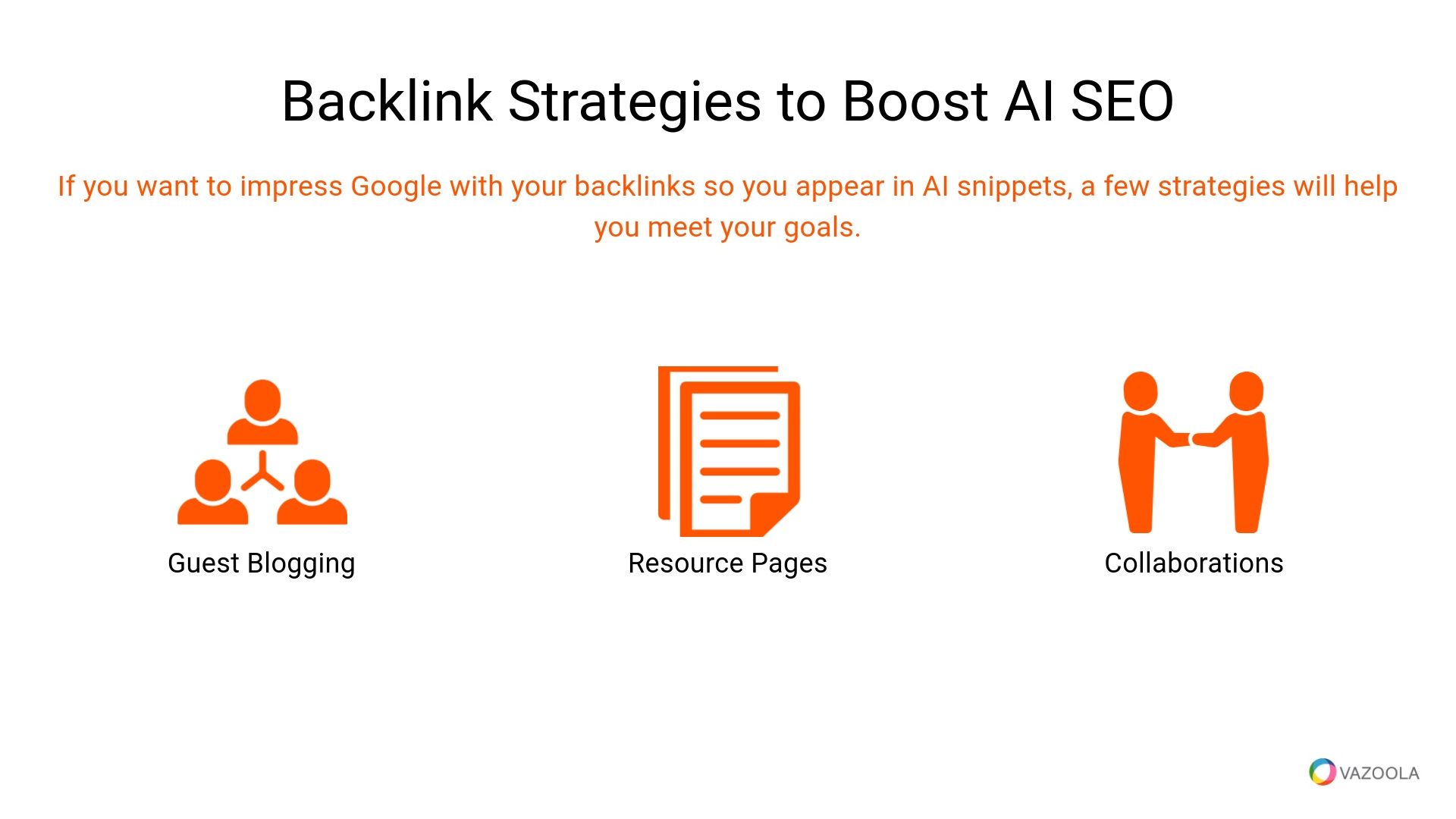
If you want to impress Google and appear in AI snippets, a few backlink building strategies will help you meet your goals:
-
Guest blogging lets you share your expertise on other reputable sites to attract backlinks.
-
Resource pages help you create valuable resources like comprehensive guides or toolkits. These naturally earn links from other sites.
-
With collaborations, you can partner with industry leaders to co-create content that benefits both parties.
When you integrate these strategies into your overall content marketing efforts, you can boost your site’s authority all while positioning yourself for success in the era of AI-driven search.
Without a doubt, AI Overviews will shape the future of search. So, optimizing them helps you make sure your content stays visible and impactful for readers. You can successfully navigate this shift by focusing on quality, relevance, and user intent.
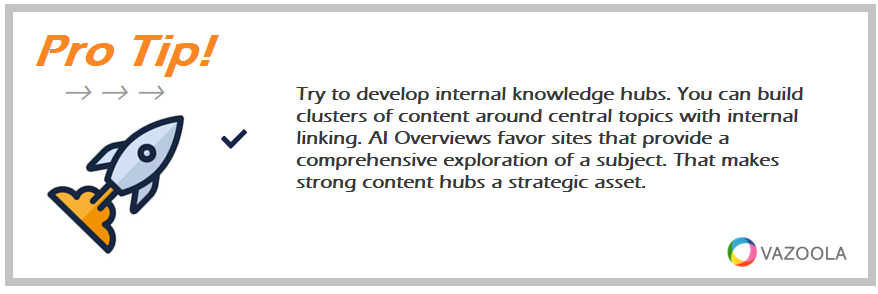
Try to develop internal knowledge hubs. You can build clusters of content around central topics with internal linking. AI Overviews favor sites that provide a comprehensive exploration of a subject. That makes strong content hubs a strategic asset.

